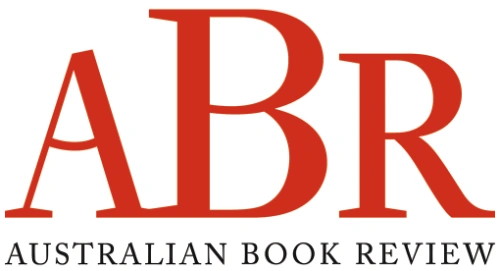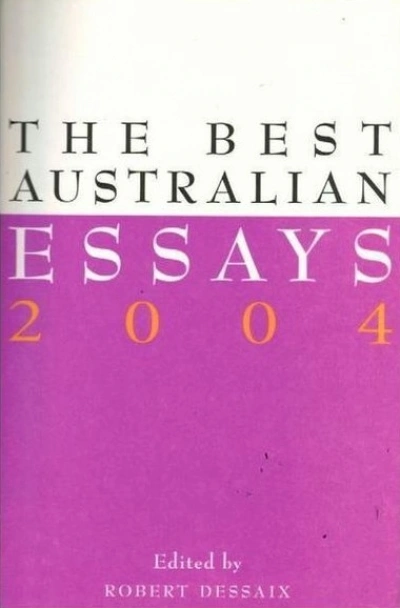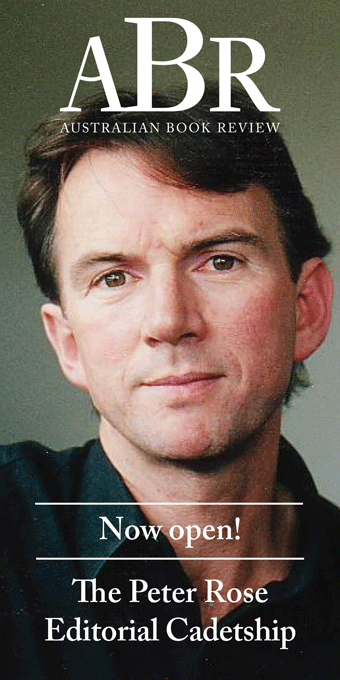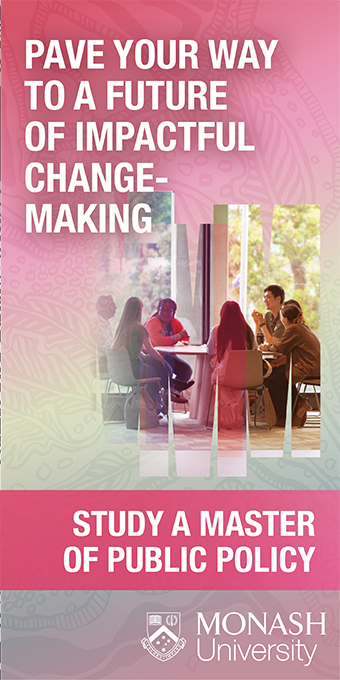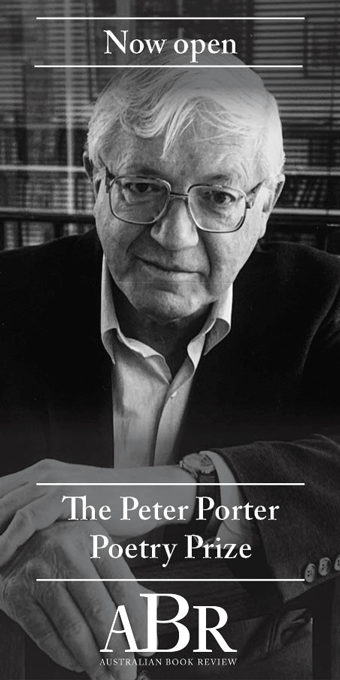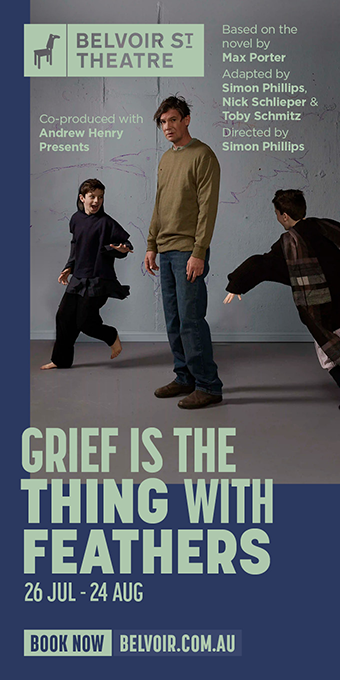Essay
For there is always going on within us a process of formulation and interpretation whose subject matter is our own selves.
These words appear towards the end of Erich Auerbach’s study of representation in Western literature, Mimesis. First published in 1946, the book has become a classic of twentieth-century literary criticism, but is almost as famous for the circumstances under which it was composed as for its content. It was written between 1942 and 1945 in Istanbul, where Auerbach, a German Jew, was living in exile.
... (read more)The Best Australian Essays 2004 edited by Robert Dessaix
In 1989 John Mulvaney proposed that ‘the greatest gift of Aboriginal society to multicultural Australia’ was ‘a spiritual concept of place’. It was a momentous pronouncement, but two decades later both the statement and the gift itself need reassessment. If Mulvaney was right, then non-Aboriginal Australians enunciated their most precise and passionate concepts of place in the two decades after 1980. Yet ‘multicultural Australia’, that is, non-Anglo-Celtic Australians, didn’t really share the gift at all. Maybe they didn’t want it. Nor did the great gift of a spiritual concept of place come without cost to the indigenous people themselves. Today, newer forms of belonging are sometimes not concerned with Australia-specific land at all. Mulvaney’s observation, I conclude, is losing some of its force.
... (read more)On 30 March 2001 Helen Garner attended a Victims of Crime Rally on the steps of Victoria’s Parliament House.
The sun shone on a loose crowd that was forming at the top of Bourke Street. Many of the demonstrators had attached pictures of their murdered loved ones to their T shirts … On their backs people wore the slogan MAKE THE PUNISHMENT FIT THE CRIME. A common poster read LET THE VICTIM HAVE THE LAST WORD IN THE SENTENCE.
Garner describes suffering faces, clumsy and sob-broken speeches, anger sharpened to ‘rough, skin-prickling eloquence’, recitations of lists of the dead, lists of crimes and sentences. At the end of the rally, Garner asked some of the speakers for their addresses. When she told a man who had impressed her with his eloquence – he wore an Akubra and his face was ‘sun-creased, sparkly-eyed and intensely like-able’ – that she was writing a book about a murder, he shook her hand and said, ‘[T]hanks for takin’ an interest’.
... (read more)It is hard to avoid the assessment that the most visible product to date of the war on terrorism has been nothing much more, or less, than more war and more terror. The unhappy reality since September 11 seems to be that all our major cities, and concentrations of Westerners anywhere, are as vulnerable as ever; the capacity of terrorist actors to do harm is as great as ever; their motivations are as great as ever; their identity is as elusive as ever; international cooperation is as fragile as ever; and international policy priorities are as misplaced as ever.
In Iraq, where the terrorist connection was the least plausible of all the reasons for going to war, terrorist violence has now become the most harrowing of all its consequences. The significance of Richard Clarke’s evidence to the September 11 Commission is not what the former anti-terrorism chief had to say, with all the wisdom that hindsight confers, about the failure of either Republican or Democrat administrations to take more effective action before September 11; rather, it is about the decision after September 11 to attack Iraq, a country that had about as much to do with it as Mexico, creating in the process the most expensive recruitment campaign for Islamist extremism ever launched.
... (read more)In a much-quoted passage at the end of the General Theory of Employment Interest and Money (1936), John Maynard Keynes remarked, with some whimsy, on the power of policy intellectuals like himself:
... (read more)The ideas of economists and political philosophers, both when they are right and when they are wrong, are more powerful than is commonly understood. Indeed the world is ruled by little else. Practical men, who believe themselves exempt from any influences, are usually the slaves of some defunct economist. Madmen in authority, who hear voices in the air, are distilling their frenzy from some academic scribbler of a few years back. I am sure that the power of vested interests is vastly exaggerated compared to the gradual encroachment of ideas.
The art collections are the main thing in an art museum, not the special exhibitions or other programs necessary for present-day credibility and fundraising. Special exhibitions can be easy fast-food showbiz, or else they can be too authoritarian, over-theorised, and bullying. Collections, the bigger the better, are where you can drop in, any day of the year, for a bit of reinvention. It’s good to choose your own pace when you want to get out of yourself .
... (read more)Nyima Drakpa, a twenty-nine-year-old Tibetan monk, died on 1 October 2003. PEN believes that his death was caused by beatings he received at the Tawu County Public Security Detention Centre, in the Kardze region of Tibet. Following his arrest in May 2000, authorities severely beat Nyima Drakpa in order to extract a confession for his alleged crimes. The head of the police team that recorded the confession was reportedly rewarded with a car for his ‘exemplary deed’. Nyima Drakpa was later sentenced to nine years’ imprisonment in a closed trial: his crimes were listed as ‘endangering state security’ and ‘incitement against the masses’.
... (read more)About a decade ago, I picked up a book because I liked the cover: bleak street, stark buildings, empty sky, a robed man, his back turned, in the distance; in the foreground, a woman in a burka looking to the left at something we can’t see. When the blurb promised me ‘a Middle Eastern Turn of the Screw, with an insidious power to grip’, I bought it. It gripped. In fact, it scared the living bejesus out of me. That was my introduction to Hilary Mantel’s writings. Since then, I have read nearly everything she has published.
Eight Months on Ghazzah Street (1988) is about a sensible young couple who, after years of humanitarian work in Africa, decide to go to Saudi Arabia to repair their fortunes. The husband will work on a seductively extravagant building project; the wife will read, write and relax in their pleasant, if mildly claustrophobic, apartment. Then small things begin to go wrong.
... (read more)Common to much Enlightenment and nineteenth century liberal thought was a belief that, as people became better educated and more affluent, so too would there be a corresponding decline of religious beliefs. This was central to the view of those two quintessential ‘modern’ thinkers, Karl Marx and Sigmund Freud, who spoke respectively of ‘the opium of the people’ and of ‘the future of an illusion’. Marx’s views expressed those of large numbers of nineteenth and twentieth century critics: ‘Religion is the sigh of the creature overwhelmed by misfortune, the sentiment of a heartless world, and the soul of soulless conditions.’ Today many sociologists write as if the old fears and/or promises that God is dead were a description of social reality for most people. This secular triumphalism seems to me badly misplaced, except in a relatively few Western countries.
At the beginning of the twenty first century, it appears that religious beliefs have lasted rather better than the idealism - some would claim themselves theological - of either Marx or Freud. Freud’s eschatology, in particular, has remarkable similarities to the dominant myths of Judaeo-Christianity, with the Oedipus complex playing the role of Original Sin in psychoanalytic theory, as Martin Wain has pointed out.
Except in a few countries, the Catholic Church has outlived its sworn enemy, the international communist movement, while fundamentalist Protestantism, Islam, Hinduism and Judaism seem to be on the rise in most parts of the world.(The last battle between communism and Christianity may well be the battle to unify Korea, with many South Korean Christians seeing unification as an opportunity for largescale missionary activity.) While it is probably true that fundamentalism is often an expression of hostility towards various manifestations of ‘modernity’ and ‘Westernisation’, it is also the case that the religious element is far more resilient than most thinkers would have prophesised a century ago.
It is worth noting that, according to figures collected by Time magazine in 2001, Christianity remains the most widespread religion in the current world, with an estimated 1.9 billion adherents in 2000, threequarters of them Catholic. There are an estimated 1.2 billion Muslims, 800 million Hindus and 360 million Buddhists, with much smaller numbers of Sikhs and Jews. These figures omit the vast array of religious beliefs that persist outside the hegemonic religions, or, increasingly, coexist with Christianity and Islam in many parts of the poor world. Both Islam and those classified as ‘nonreligious’ are listed as the fastest growing groups, and Confucianism is not mentioned, a reflection perhaps of confusion as to whether it is better understood as a religious or ethical system. In the contemporary world, Christianity and Islam stand apart as the two major proselytising religions, and the only ones whose adherents are genuinely global and not concentrated among one or two particular countries or ethnic groups. Where they collide - as in Lebanon, the former Yugoslavia and parts of India and Indonesia - the consequences are not infrequently bloody.
In the contemporary world, the most common examples of violence and persecution linked to religion seem to come from the Islamic world, though even to assert this is to risk giving political offence. Indeed, the more that Western governments, led by the US, try to rally support against religious based terrorism, the more they feel obliged to deny the link, to depict those terrorists who claim support from their religious convictions as somehow false believers.
Yet one can deplore attacks on individuals because they appear to hold particular beliefs while retaining the intellectual right to criticise the logic of those beliefs. It is hardly controversial today to point to the extent to which largescale murder was justified as part of the imperial European expansion into the rest of the world through appeals to the Christian mission. Priests and missionaries were often the frontrunners of the imperialist venture, and apologists for the worst sort of barbarity. Islam hardly has a monopoly on links to violence and intolerance - consider the ravages of fundamentalist Hindus, Christians and Jews - but, in this particular moment of world history, there are probably more Muslims who turn to religion to justify attacks on their opponents than practitioners of any other religion. At the same time, we should not forget the recent slaughter of Muslims by Christian Serbs in Bosnia, or by Hindus in Gujarat, or the role of Christians, including priests and nuns, in internecine slaughter in Rwanda. Most fundamentalist believers are willing to condone violence when directed against those they regard as sufficiently sinful, and Christianity has a long history of extraordinary barbarism.
I want to ask two questions, beginning with this apparent persistence of religion despite huge rises in affluence and education. This is an historical and sociological question, but it overlaps with a more profoundly personal and philosophic one, namely, how can people who appear to agree on much in the social and political sphere disagree profoundly about the basis for their beliefs? There are many people whose commitment to social justice stems from deepseated religious beliefs, but there are equally many, of whom I am one, who share such commitments without any religious foundation or with an instinctive antipathy to all forms of organised religion.
... (read more)